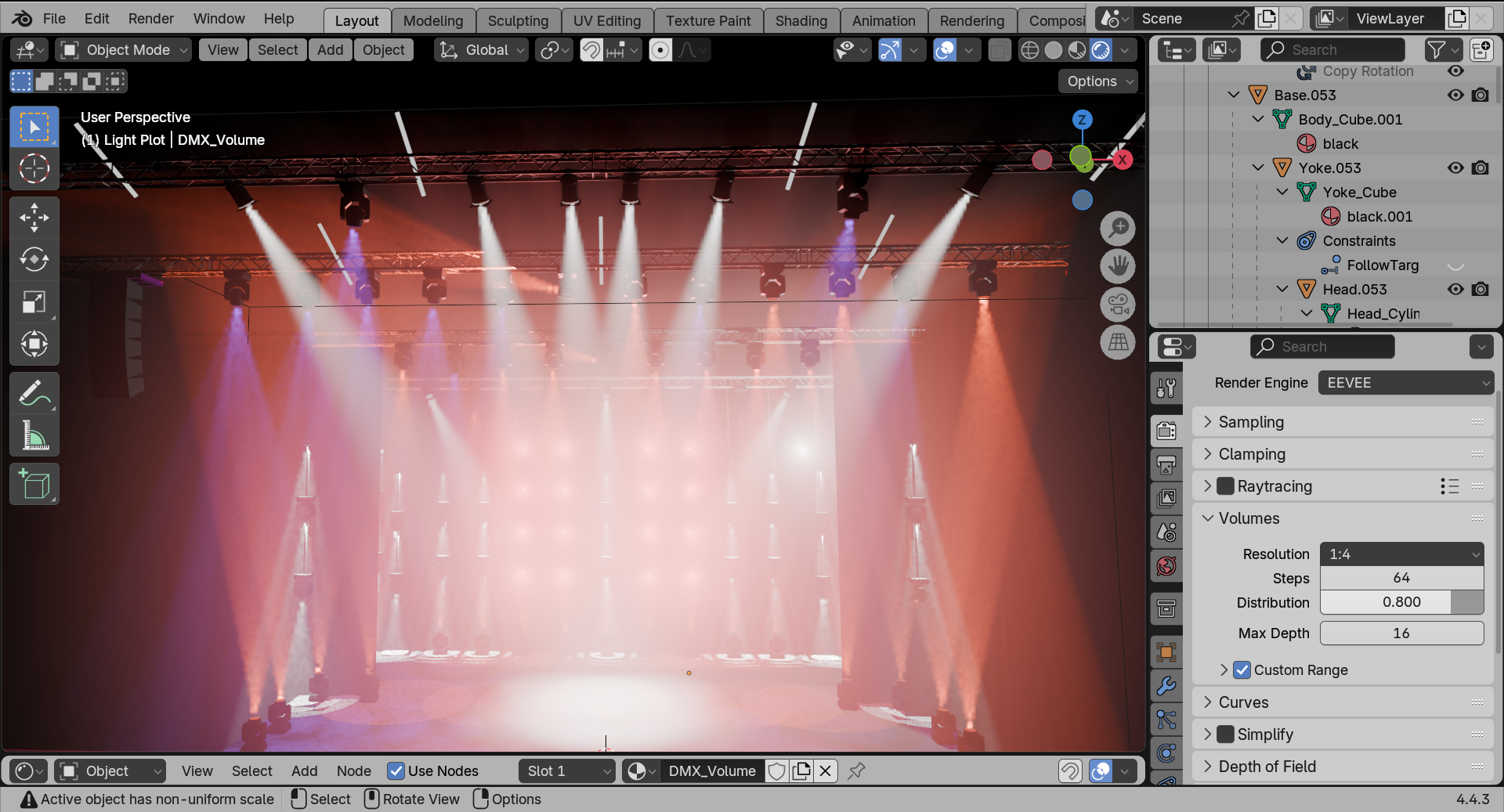Real World Physical Properties of GDTF Devices Newly Supported in BlenderDMX v2.0.1
Posted May 24, 2025 ‐ 3 min read ‐ Categories: GDTF, MVR, BlenderDMX
The BlenderDMX addon has been released with support for real world physical properties, transforming it from a “nice effects generator” into a lighting visualizer representing real lighting fixtures behavior.

The BlenderDMX GDTF based addon for Blender has been released in version 2.0.1, below we are presenting information about what seems to be a very solid and usable release:
Support for GDTF real-world physical properties
The data provided in the GDTF files includes not only 3D models, gobo images… or the necessary DMX control descriptions, but it additionally contains measurements of movement ranges, beam angles, rotation speeds, and other physical parameters. This release of BlenderDMX Addon adds initial support for utilizing these measurements on supported visualized device properties, transforming it from a “nice effects generator” into a lighting visualizer representing real lighting fixtures behavior.
Supported GDTF Attributes
The following currently supported GDTF Attributes now utilize physical measurements from both Channel Functions and Channel Sets:
- Pan, Tilt, PanRotate, TiltRotate
- Zoom, Iris
- CTC, CTB, CTO
- Shutter1, Dimmer, ShutterStrobe
- Color1, Color2, Color3, ColorMacro1
- Gobo1, Gobo1Pos, Gobo1PosRotate
- Gobo2, Gobo2Pos, Gobo2PosRotate
Current limitations:
- Acceleration and time for the movement is not utilized yet (so for example Pan or Tilt can move unrealistically fast).
- Strobing should be improved for short “flashes”, rather then “blinks”.
- Combining multiple colors on a single device needs to be improved (for example using RGB and CTO at the same time).
Enhancements thanks to using physical properties:
Using the physical properties brings also further enhancement in visualization, for example when selecting colors on ColorWheels or gobos on GoboWheels now uses correct Wheel Slots. Strobing has been reworked to use Blender’ “driver” feature, using the “frame” of the animation playback with correct strobing speed. Some behavior of the device can be conditionally affected by a value of multiple channels (for example Gobo Indexing and Gobo Rotation, Pan and PanRotation or Zoom ranges) and this is supported by utilizing the Mode dependency (Mode Masters) feature of GDTF.
Performance
Being able to represent lighting devices more correctly should enhance the usefulness of BlenderDMX Addon for the generation of high-quality renders, particularly with the Blender Cycles renderer and we hope that future developments in Blender’s Eevee Next will improve the real-time visualization of many volumetric beams.
Speed up improvements should also be done in the Addon, even thought this initial support for utilization of the physical parameters in BlenderDMX Addon already includes additional per channel caching, to reduce the newly introduce rendering speed penalty, but future improvements would be valuable for real-time previsualization.
Other improvements:
- Programming movement via Pan/Tilt/PanRotate/TiltRotate sometimes collides with the “follow Target” feature. New option to ignore the Target on selected fixtures allows to have more control during programming.
- When zooming in to smaller diameter, the intensity is now being increased, further mimicking real world behavior.
- The out-of-the-box included GDTF profiles have been improved
Updating:
After updating BlenderDMX and opening .blend files created in older versions, GDTF fixtures need to be re-edited in the Advanced mode: select fixture, go to Fixtures → Edit → Advanced edit, make sure a correct GDTF profile is selected, click OK.
For further details, see the BlenderDMX project’s announcements.